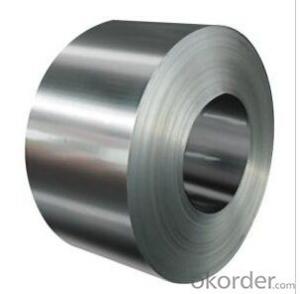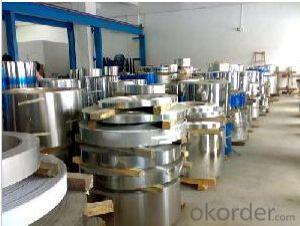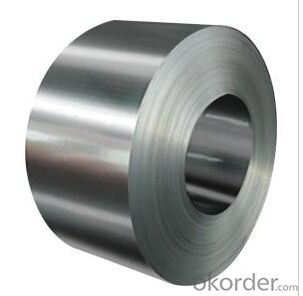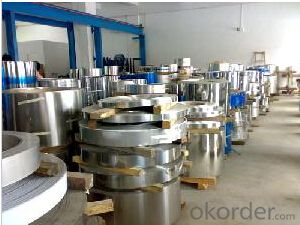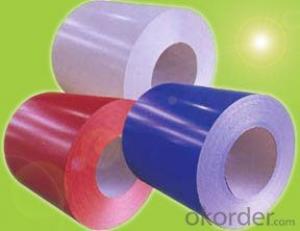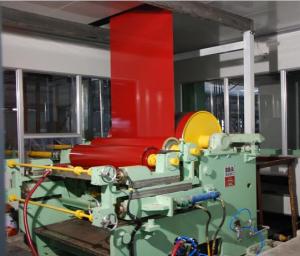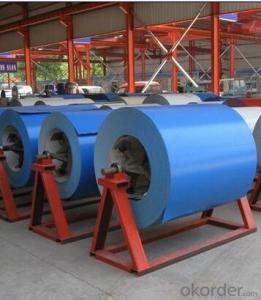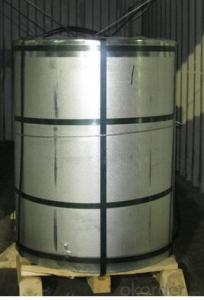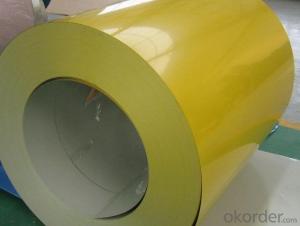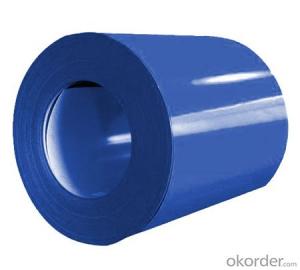Cr Stainless Steel Coil (Sm06) for Construction
- Loading Port:
- Tianjin
- Payment Terms:
- TT OR LC
- Min Order Qty:
- 25 m.t.
- Supply Capability:
- 10000 m.t./month
OKorder Service Pledge
OKorder Financial Service
You Might Also Like
Description Info.
Model NO.:410/430/409
Surface Treatment:Polished
Technique:Cold Rolled
Standard:JIS, AISI
Thickness:0.16mm-2.0mm
Width:10mm-850mm
Surface:2b/Ba/No.4/Mill Edge/Slit Edge
Export Markets:Global
Additional Info.
Packing:Good Export Packing & Packages
Standard:SGS
Origin:China
HS Code:7219340000
Production Capacity:4000tons/Month
Product Description
Stainless steel coil -SM06
Our material brand: Bao steel, JISCO, TISCO
MIAN PRODUCT: 410, 409, 430, 420J1, 420J2
SURFACE: 2B, BA, DULL Polish, PVC/PAPER COVER
WIDTH: 10MM-850MM
THICKNESS: 0.2MM-2.0MM
PRODUCETS: CR STAINLESS STEEL COILS/SHEETS/STRIPS
| Commodity | Stainless Steel Coil/Sheet/Strip |
| Grade NO. | 410S/430L/409 |
| Surface | 2B/BA/NO.4/Slit Edge/Mill Edge |
| Standard | JIS/GB |
| Material | Bao steel/TISCO/LISCO/JISCO |
| Specification | Thickness: 0.2mm*2.0mm Width:10mm*850mm Tolerance:+/-0.02mm Coil Weight:Depond on clients |
| Technology | Cold Rolled |
| Certification | SGS |
| Application | Dinner set Kitchen ware Owner frame of security door Auto vent-pipe Vacuum cup Clean bucket water sink and so on. |
| Advantage | Attracting Price; High suface quality,clean; Good appearance of whole coil; First-rate service. |
| Package | Good Export packing/Package |
| Delivery | Within 15-20 days |
| Payment | T/T, L/C |
| Shipment | FOB/CFR/CIF/EXW |
| Productivity | 4000MT/month |
| Note | We can accept clients' any requirements as much as possible. |
- Q: I was reading about the Colt 38 Super Custom and it said it's optional between a carbon steel frame or a stainless steel frame. What is the difference? There is also a choice between aluminium or stainless steel hammers and triggers can you also tell me the difference between them please?
- Carbon steel is harder but does not resist corrision as well. It really depend on the grade. Like 440A is crap and 440C is much better. Aluminum would be the way to go. It is lighter and just as if not stronger. Some people will be die hards when it comes to either metal. I don;t know much about the guns. I know plenty about different grades of sttel when I collected swords and knives.
- Q: I got my dog those nice looking stainless steel water and food bowls (looks great next to my kitchen appliances...haha). The thing is my dog will drink from the toilet or a plastic bowl but not out of his bowl...I was wondering if those stainless steel bowls change the taste of food and water?
- Personally I use stainless steel for my own dogs because ti is easy to keep clean, and doesn't weigh too much when I am carrying 3 large bowls full of food. Plus when I drop them they don't break. The only reason I don't use plastic is because my dogs like to chew anything plastic :P I use plastic for my foster cats and foster puppies and have never had any sort of infection. Personally I think that is some sort of myth as I have never known anyone's pet to get an infection from a plastic bowl. As long as you keep them clean, plastic or stainless are both fine
- Q: What is stainless steel coil used for?
- Stainless steel coil is highly valued in numerous industries for its long-lasting nature, ability to resist corrosion, and attractive appearance. One of its most frequent uses occurs in the manufacturing and construction fields, where it is employed in the creation of a wide array of products such as kitchen appliances, cutlery, automotive components, and architectural structures. Its resistance to corrosion makes it especially suitable for applications that necessitate protection against moisture, chemicals, and harsh environmental conditions. Moreover, the strength and ability to withstand high temperatures make stainless steel coils well-suited for use in industrial equipment, heat exchangers, and piping systems. Furthermore, the sleek and contemporary look of stainless steel is often preferred in the design and production of consumer goods like furniture, jewelry, and decorative items. In summary, stainless steel coil is a versatile material that is extensively utilized in a variety of industries due to its exceptional mechanical properties, ability to resist corrosion, and its versatility in terms of appearance.
- Q: I have a new stainless steel trash compactor under a butcher block counter. We refinished the countertop, but unfortunately the person who did it wasn't careful with the orbital sander and sanded the top edge of the stainless steel compactor door, ruining the finish. The sander marks are not deep - just surface scratches - but they are unsightly. Is there any way to restore the finish to the stainless steel without having to buy a new door?
- Go over the entire surface with wet/dry sandpaper with the grain. Use wet with a little dish detergent. Remove the handles and name plates first. Start with 400, then 600, and then 800. Auto supply should sell the sandpaper. After final sanding, wax with carnuba wax and polish. Works on aluminum and real stainless not painted surfaces.
- Q: What are the challenges in coil recoiling?
- Some of the challenges in coil recoiling include achieving precise and consistent coiling, minimizing coil distortion and tangling, preventing material damage or breakage during recoiling, and ensuring efficient and safe handling of coiled materials. Additionally, factors such as coil size, weight, and material properties can also pose challenges in the recoiling process.
- Q: What are the different coil coatings available for steel coils?
- Steel coils have a variety of coil coatings to choose from, each with its own unique benefits and characteristics. The industry commonly uses the following coil coatings: 1. Polyester coil coatings: These coatings are widely utilized because of their exceptional durability and resistance to fading, scratching, and corrosion. They offer good UV resistance and are available in a wide array of colors. 2. Polyvinylidene fluoride (PVDF) coatings: PVDF coatings are renowned for their outstanding resistance to weathering and UV radiation. They provide excellent color and gloss retention, as well as overall durability, making them ideal for outdoor applications. 3. Polyurethane coil coatings: These coatings offer a high level of flexibility and abrasion resistance. They have excellent chemical resistance and are often employed in industries such as automotive and appliances. 4. Silicone modified polyester (SMP) coatings: SMP coatings are known for their resistance to fading, chalking, and cracking. They provide exceptional weather resistance and are commonly used in architectural applications. 5. Epoxy coil coatings: Epoxy coatings are recognized for their remarkable adhesion and chemical resistance. They are frequently utilized in demanding environments like automotive parts and appliances. 6. Plastisol coatings: Plastisol coatings, which are PVC-based, form a thick and flexible film on the surface of the steel coil. They offer excellent corrosion resistance and are commonly used in the construction industry. These examples illustrate the range of coil coatings available for steel coils. The choice of coating depends on factors such as the intended application, environmental conditions, desired appearance, and required performance characteristics. Seeking advice from a coil coating specialist can help determine the most suitable coating for a specific project.
- Q: I made a wood crossbow body but all I need is a bow which I want to be metal. I've used a thin steel sheet that I cut to appropriate size but when it bent with the string strung, it never went to original shape after being shot. I used a slightly thicker and it wouldn't bend at all. Anybody know what thickness and type to use? Any real answers are very appreciated. Thanks.
- You are trying to use plain carbon steel which only can be bent a little bit if it is to return to its original shape. You have to use spring steel or high carbon steel that is intended to be bent a lot and still recover to its original shape. Most people making crossbows with metal bows get a piece of steel from a leaf spring of a vehicle and grind it to shape. A steel bow cross bow almost always needs a very strong trigger mechanism and a miniature wench to pull the steel bow string into position. You might be better off making the bow of wood.
- Q: I have hundreds of pounds of scrap steel... who purchases this steel and what is the price per pound etc. of this? Does someone pick it up or do I bring it somewhere?
- It okorder /
- Q: What are the dimensions of steel coils used in the aerospace industry?
- The dimensions of steel coils used in the aerospace industry can vary depending on the specific application and requirements. However, generally speaking, aerospace-grade steel coils tend to have standardized dimensions to ensure compatibility and ease of use. Typically, the thickness of steel coils used in the aerospace industry ranges from 0.008 inches (0.2 mm) to 0.125 inches (3.2 mm). The width can vary from around 0.5 inches (12.7 mm) to 72 inches (1829 mm), although narrower widths are more common. The length of the coil can range from several hundred feet to thousands of feet, depending on the needs of the specific aerospace manufacturer. It's important to note that these dimensions are not fixed and can be customized based on the requirements of the aircraft or aerospace component being manufactured. The dimensions of steel coils may also differ depending on the specific steel alloy being used and the manufacturing processes involved. Ultimately, the dimensions of steel coils in the aerospace industry are determined by factors such as strength, weight, durability, and the specific needs of the aerospace manufacturer or project.
- Q: Bronze came before steel, right? thanks
- Yes; a very long time. 1000 years (?) Or even a bit more.
Send your message to us
Cr Stainless Steel Coil (Sm06) for Construction
- Loading Port:
- Tianjin
- Payment Terms:
- TT OR LC
- Min Order Qty:
- 25 m.t.
- Supply Capability:
- 10000 m.t./month
OKorder Service Pledge
OKorder Financial Service
Similar products
Hot products
Hot Searches
Related keywords
